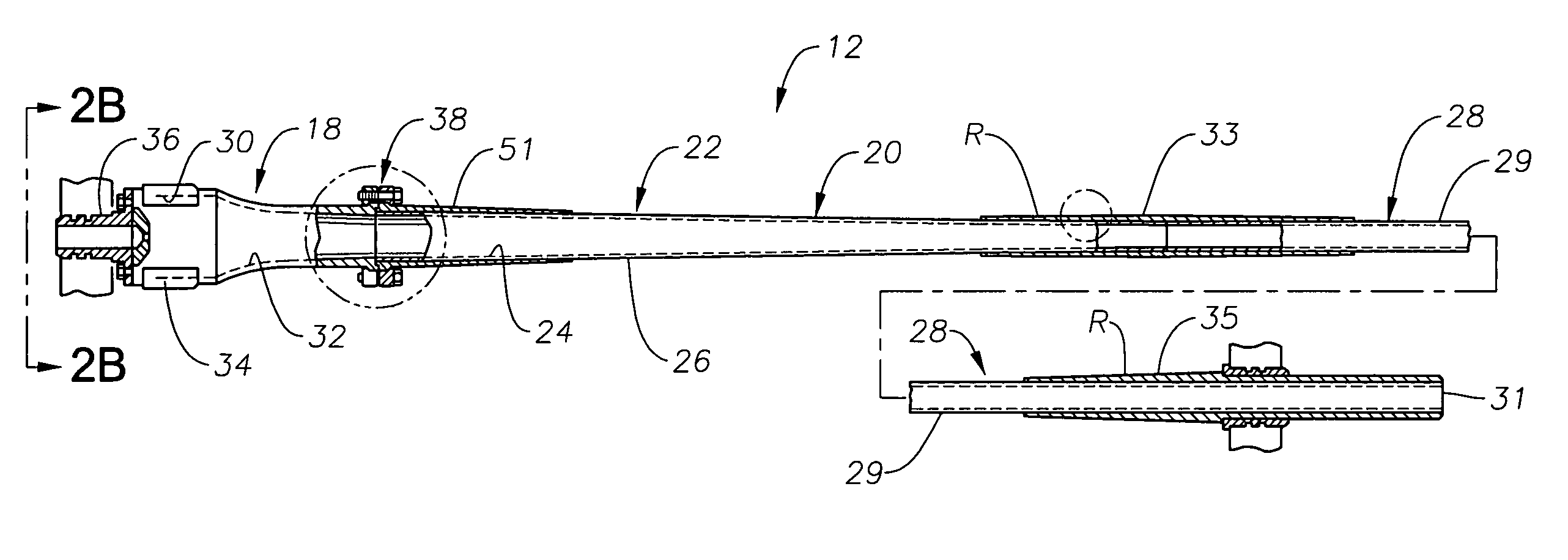Erosion-resistant hydrocyclone liner
a hydrocyclone liner and erosion-resistant technology, applied in the direction of solid separation, wet separation, single direction vortex, etc., can solve the problems of hydrocyclones that have been expected to experience greater wear, liquid/liquid hydrocyclone erosion is a serious problem in certain installations, and the engineering of a liquid/liquid hydrocyclone liner that is both erosion-resistant and can support its own weight is challenging
- Summary
- Abstract
- Description
- Claims
- Application Information
AI Technical Summary
Benefits of technology
Problems solved by technology
Method used
Image
Examples
Embodiment Construction
[0035]FIG. 1 illustrates a portion of a hydrocyclone assembly 10, of a type known in the art, having a plurality of hydrocyclones, or liners, 12 that separate fluid components of a fluid mixture. Those of skill in the art will understand that the hydrocyclone assembly 10 includes numerous other components and systems that are not germane to the present invention and, therefore, are not described in any detail here. Two support plates 14 and 16, which are located proximate opposite ends of the hydrocyclones 12, support the hydrocyclones 12. The two support plates 14, 16 are installed within a hydrocyclone vessel 17 having a fluid inlet I, underflow outlet O1 and reject outlet O2. A fluid mixture enters the fluid inlet I into central chamber 11. Fluids separated by the hydrocyclones 12 are emptied into the underflow chamber 13 and reject chamber 15. As indicated by FIG. 1, a fluid mixture enters the inlet I under high fluid pressure, and there is lower fluid pressure proximate the res...
PUM
 Login to View More
Login to View More Abstract
Description
Claims
Application Information
 Login to View More
Login to View More - R&D
- Intellectual Property
- Life Sciences
- Materials
- Tech Scout
- Unparalleled Data Quality
- Higher Quality Content
- 60% Fewer Hallucinations
Browse by: Latest US Patents, China's latest patents, Technical Efficacy Thesaurus, Application Domain, Technology Topic, Popular Technical Reports.
© 2025 PatSnap. All rights reserved.Legal|Privacy policy|Modern Slavery Act Transparency Statement|Sitemap|About US| Contact US: help@patsnap.com



